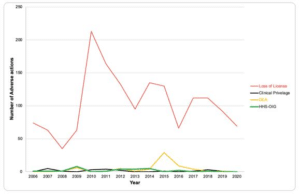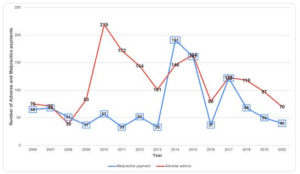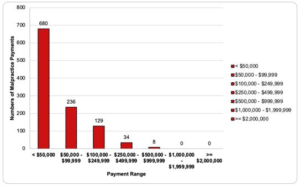Jasmine Kaur1, Viyan S Kadhium2*, Priyanka Belgal3, Riddhi Chheda4, Cheske Allora5, Peggy Timothé6, Sheetal R Asher7, Romesh P Nalliah8
1BDS, MDS (OMFS), Research Assistant, University of Michigan School of Dentistry, USA
2DDS, Research Assistant, University of Michigan School of Dentistry, USA
3 BDS, MDS (OMFS), Research Assistant, University of Michigan School of Dentistry, USA
4BDS, MHA, Research Assistant, University of Michigan School of Dentistry, USA
5MPH, Research Assistant, University of Michigan School of Dentistry, USA
6DDS, MPH, Assistant Professor, Program Director of Dental Public Health Residency, Texas A and M University College of Dentistry, USA
7DDS, Texas Tooth Fairies Pediatric Dentistry, Cedar Park, Texas, USA
8BDS, MHCM, Associate Dean for Patient Services, University of Michigan School of Dentistry, USA
*Corresponding Author: Viyan S Kadhium, DDS, Research Assistant, University of Michigan School of Dentistry, USA; Email: [email protected]
Published Date: 08-08-2022
Copyright© 2022 by Kadhium VS, et al. All rights reserved. This is an open access article distributed under the terms of the Creative Commons Attribution License, which permits unrestricted use, distribution, and reproduction in any medium, provided the original author and source are credited.
Abstract
Objective: Health practitioners are potentially subject to malpractice claims against them and previous research has indicated that legal proceedings against dentists are becoming a larger proportion of all malpractice payments against healthcare professionals in the United States. The objective of this study is to describe trends in the number of malpractice payments and adverse actions made against dentists in the state of Texas over a fifteen-year period from 2006 to 2020.
Methods: Data regarding the adverse actions and malpractice payments against dentists was retrieved from the National Practice Data Bank for the years 2006-2020. The data set included adverse actions such as loss of clinical licensure, loss of clinical privileges or panel memberships, drug enforcement administration license and Department of Health and Human Services-Office of the Inspector General exclusion (i.e., exclusion from federally funded health programs). We exported all data into data visualization tools which we used to study and report trends. The University of Michigan Medical School Committee on Human Studies determined our study was not regulated and exempt (HUM00116742).
Results: The number of adverse actions against dentists in Texas rose from 2006 (75 actions) to 2015 (164 actions) followed by a downward trend until 2020 (70 actions). The number of malpractice payments against dentists had an inverse relationship with adverse actions between 2006 – 2014 and again 2017 – 2020. However, during 2014 – 2016 there was a concurrent increase in malpractice payments and adverse actions. Loss of clinical licensure was the most common (91.23%) adverse action, followed by Drug Enforcement Administration (DEA) action (3.77%), Health and human services – exclusions by the Office of the Inspector General (HHS OIG) exclusion (1.68%) with the least common being cancellation of clinical privileges/panel memberships (1.33%).
Conclusion: The number of malpractice payments against dentists followed a loosely inverse relationship with adverse actions.
Keywords
Malpractice; Payments; Claims; Adverse Actions; Texas; Dentists; Clinical Licensure
Introduction
Dental practitioners, like other healthcare professionals, can be subject to malpractice claims against them. Evidence shows that the number of dental malpractice payments in the US has increased, but the number of non-dentist health care professional malpractice payments has decreased [1]. Lack of informed consent has been shown to be the one of the causes of litigation in many cases when complications related to the procedure arise [2]. Studies and articles have highlighted the importance of informed consent and its link to medical (including dentistry) litigation [2-5]. The principle of patient autonomy is fundamental to the practice of good dentistry because it ensures that patients are completely and honestly informed (informed consent) and empowered to decide on the course of their treatment [6,3]. As the American Dental Association has stated, “informed consent is a process, not just a signature on a form” [7]. When patients are informed of all possible outcomes and complications throughout their treatment, their expectations are more reasonable than if the obtaining of consent is just a one-time event. Furthermore, litigation comes with a heavy price tag. In 2021, the average dental malpractice claim which includes payment and legal defense was found to cost up to $107,915 [8]. Reports relating to dentists and malpractice claims can be found through the National Practitioner Data Bank (NPDB) [9]. The NPDB was created by the Department of Health and Human Services in 1986, to improve healthcare quality [10]. Prior to this, healthcare professionals who were barred from practice in one institution or state could simply move to the next one. Extraordinary lists of multiple malpractice cases against the same professional are available through various online sources [11]. A 2007 study that investigated dentist reports in the NPDB from 1990 to 2004 found that a total of 13.2% of all NPDB reports were related to dentists and that 73.7% of those resulted from malpractice actions [12]. The study concluded that dental malpractice settlements have generally kept pace with inflation over the past decade. According to NPDB, an adverse action is an action taken by a board of registration in dentistry against a practitioner’s clinical privileges and malpractice payments is a monetary exchange as a result of a settlement or a claim demanding monetary payment for damages [13]. The current paper is intended to serve as an evaluation of the trends in malpractice payments and adverse actions made against dentists in Texas over a fifteen-year period of 2006 to 2020.
Material and Methods
Our study of adverse actions and number of malpractice payments against dentists utilizes data from the NPDB [14]. Data for the state of Texas from 2006-2020 was extracted and evaluated. There is a two-year lag between data collection and release of data and that is why the most recent year currently available is 2020. All data was exported from NPDB into Microsoft Excel and graphs were generated. We used these graphs to study and report the trends. The University of Michigan Medical School Committee on Human Studies determined our study was not regulated and exempt (Study ID HUM00116742).
The information we considered in the evaluation for the state of Texas included the type of healthcare provider, the state the healthcare provider was working in, the year when malpractice payment was made, the range of payment amount, the adverse action taken (loss of state licensure, loss of clinical privileges or panel membership, Drug Enforcement Administration (DEA) and Health and human services – exclusions by the Office of the Inspector General (HHS-OIG). The NPDB website describes the above-mentioned parameters as –
An adverse action can include any of the following, a disciplinary action taken against a practitioner’s clinical privileges, licensure, membership and exclusion from Medicare/Medicaid.
Medical Malpractice Payment is a financial compensation given by a licensed healthcare practitioner as a result of a settlement or judgment of a written complaint or claim. This can be due to a practitioner’s provision of or failure to provide health care services; and may include, but is not limited to, the filing of a tort claim in any adjudicative body.
Clinical Privileges are privileges and membership that authorizes licensed health care practitioners to render medical care by a healthcare organization.
Drug Enforcement Administration (DEA) allots practitioners Federal DEA numbers and registers them to prescribe controlled substances.
HHS OIG Exclusion is a list of Excluded Individuals/Entities (LEIE) that provides information regarding individuals and entities currently excluded from participation in Medicare, Medicaid, and all other Federal healthcare programs.
Results
Table 1 shows that there were 65 malpractice payments by dentists in 2006. The upper limit during the period of the study was in 2014 when there were 191 malpractice payments. The malpractice payments after 2014 declined steadily to 40 cases in 2020 with the exception of a spike of 122 in the year 2017. The number of adverse actions against dentists was also observed to increase from 75 in 2006 to 164 in 2015 and then declined to 70 in 2020. It can be seen that the number of malpractice payments against dentists have been at or below the state average with the exception of three major peaks – 2014, 2015 and 201
Loss of license was the most common adverse action taken (91.23%). Revocation of DEA license was the second most common adverse action against the dentist and comprised 3.77% of the total adverse actions. HHS OIG exclusion (1.68%) and cancellation of clinical privileges/panel memberships (1.33%) were the minor category of adverse actions taken against dentists. HHS OIG exclusion ranged from a minimum of 0 to a maximum of 8 cases and cancellation of clinical privileges and panel memberships ranged from a minimum of 0 to a maximum of 5 cases, during the study period.
In the study period, the majority of payments were < $250,000, with the largest number (680) of malpractice payments being less than $50,000 followed by $50,000- $99,999 (236) and $100,000 – $249,000 (129) respectively. There were only a small number (42) of payments above $250,000 (Table 2,3).

Table 1: Adverse actions and malpractice payments against dentists.

Table 2: Type of adverse actions against dentists.

Table 3: Malpractice payment range.
Discussion
The objective of the current study was to describe the trends in the number of malpractice payments made by dentists and the number of adverse actions taken against dentists in Texas. Table 1 shows the number of adverse actions taken against dentists in Texas over the fifteen-year study period. According to Shulman, et al., an increase in the number of adverse actions against dental professionals were thought to be due to hospitals, agencies, and state boards becoming more familiar with the reporting requirements [13]. A decline in the number of adverse actions, on the other hand, may represent an actual decrease or may be due to leniency on the part of state boards, hospitals, professional societies, and other authorities in enforcing discipline or reporting their activities. Shulman also stated that, though reporting mandates were clear, the systems in place to provide oversight to the reporting were not perfect and that under-reporting could occur.
Our study showed that, of all the categories of adverse actions against clinicians, loss of state licensure was the most common (91.23%), followed by DEA license cancellation (3.77%). Previous evidence has shown that, among the various options, the strongest measures that health practitioner boards can take to safeguard the public from danger are restrictive/adverse actions [14,15].
Additionally, research has shown that the most common reasons cited for litigation are failures of communication and documentation [16]. Previous evidence has shown that, of all decisions regarding disciplinary actions, 43% were in the favor of the patient and 31% in the favor of the dentist [17]. A study on medical license revocation in Texas showed that factors associated with more severe disciplinary action have been found to include a history of two or more disciplinary actions and a longer time period of practice (increased number of patient encounters) [18].
We found a loosely inverse relationship between adverse actions and malpractice payments. Therefore, a greater number of adverse actions may be a factor in a decreased number of malpractice payments. Communication and documentation are the most common reasons for litigation – existing evidence shows that better communication and documentation are strategies to protect the dental provider from malpractice litigation [19].
Interestingly, our study found that the majority of malpractice payments were less than $50,000. The reason for this is unclear but may be due to smaller out-of-court settlements made to avoid more expensive outcomes. The indemnity insurer may negotiate for an out-of-court settlement and payment as a part of a business decision and may even overrule the objection of the defendant practitioner [13]. Yisi, et al., found that the majority of oral surgery litigation claims were concluded by an out-of-court settlement [20]. They also state that claims reaching settlements rather than court adjudication were resolved faster and with lower payments. In our scope of study, we are not able to correlate the same with general dentistry practice.
Forster, et al., suggested that important factors in reducing medical legal risk are improving communication skills, documenting the basis for decisions early on, practicing skilled medicine, engaging with patients honestly and openly, and treating patients and their families respectfully [17]. Schaffer, et al., suggested that implementation of multi-faceted patient safety program that included development of procedural protocols and guidelines, team training, regular review of adverse events by a patient safety committee, and establishment of a system for anonymous event reporting may improve patient safety and reduce liability [21]. This has been implemented in many other medical specialties. The same approach can be used to develop guidelines in dentistry; however, implementation is exceedingly more complex with 50% of dentists serving in solo and 80% work in small practices with limited resources or inter-practice collaborations [22-25].
Conclusion
The purpose of this study was to describe trends in the adverse actions and malpractice payments against dentists in Texas. The number of malpractice payments against dentists followed a loosely inverse relationship with adverse actions and showed no neat trend.
Conflict of Interest
The authors report no conflict of interest. The authors alone are responsible for the content and writing of the manuscript.
References
- Chestnutt IG, Schäfer F, Jacobson AP, Stephen KW. Incremental susceptibility of individual tooth surfaces to dental caries in Scottish adolescents. Community Dent Oral Epidemiol. 1996;24(1):11-6.
- Juhl M. Three‐dimensional replicas of pit and fissure morphology in human teeth. Eur J Oral Sci. 1983;91(2):90-5.
- Ito S, Shimada Y, Sadr A, Nakajima Y, Miyashin M, Tagami J, et al. Assessment of occlusal fissure depth and sealant penetration using optical coherence tomography. Dent Mater J. 2016;35(3):432-9.
- Symons AL, Chu CY, Meyers IA. The effect of fissure morphology and pretreatment of the enamel surface on penetration and adhesion of fissure sealants. J Oral Rehabil. 1996;23(12):791-8.
- Demirci M, Tuncer S, Yuceokur AA. Prevalence of caries on individual tooth surfaces and its distribution by age and gender in university clinic patients. Eur J Dent. 2010;4(3):270.
- Kitchens DH. The economics of pit and fissure sealants in preventive dentistry: a review. J Contemp Dent Pract. 2005;6(3):95-103.
- Buonocore M. Adhesive sealing of pits and fissures for caries prevention, with use of ultraviolet light. J Am Dent Assoc. 1970;80(2):324-8.
- Ahovuo‐Saloranta A, Forss H, Walsh T, Nordblad A, Mäkelä M, Worthington HV. Pit and fissure sealants for preventing dental decay in permanent teeth. Cochrane Database of Systematic Reviews. 2017(7).
- Naaman R, El-Housseiny AA, Alamoudi N. The use of pit and fissure sealants-A literature review. Dent J. 2017;5(4):34.
- Wright JT, Crall JJ, Fontana M, Gillette EJ, Nový BB, Dhar V, et al. Evidence-based clinical practice guideline for the use of pit-and-fissure sealants: a report of the American Dental Association and the American Academy of Pediatric Dentistry. J Am Dent Assoc. 2016;147(8):672-82.
- Wenzel A. Current trends in radiographic caries imaging. Oral Surg Oral Med Oral Pathol Oral Radiol. 1995;80(5):527-39.
- Wenzel A. Bitewing and digital bitewing radiography for detection of caries lesions. J Dent Res. 2004;83:72-5.
- Karteva E, Manchorova-Veleva N, Stefanova V, Atanasov M, Atanasov A, Pashkouleva D, et al. Novel methods for the assessment of crack propagation in endodontically treated teeth. J IMAB-Annu Proceeding (Sci Pap). 2016;22(3):1308-13.
- Holtzman JS, Osann K, Pharar J, Lee K, Ahn YC, Tucker T, et al. Ability of optical coherence tomography to detect caries beneath commonly used dental sealants. Lasers Surg Med. 2010;42(8):752-9.
- Amaechi BT, Higham SM, Podoleanu AG, Rogers JA, Jackson DA. Use of optical coherence tomography for assessment of dental caries: quantitative procedure. J Oral Rehabil. 2001;28(12):1092-3.
- Amaechi BT, Podoleanu AG, Higham SM, Jackson DA. Correlation of quantitative light-induced fluorescence and optical coherence tomography applied for detection and quantification of early dental caries. J Biomed Opt. 2003;8(4):642-8.
- Zain E, Zakian CM, Chew HP. Influence of the loci of non-cavitated fissure caries on its detection with optical coherence tomography. J Dent. 2018;71:31-7.
- Duangthip D, Lussi A. Effects of fissure cleaning methods, drying agents, and fissure morphology on microleakage and penetration ability of sealants in-vitro. Pediatr Dent. 2003;25(6):527-33.
- Oong EM, Griffin SO, Kohn WG, Gooch BF, Caufield PW. The effect of dental sealants on bacteria levels in caries lesions: a review of the evidence. J Am Dent Assoc. 2008;139(3):271-8.
- Markovic D, Petrovic B, Peric T, Miletic I, Andjelkovic S. The impact of fissure depth and enamel conditioning protocols on glass-ionomer and resin-based fissure sealant penetration. J Adhes Dent. 2011;13(2):171.
- Garg N, Indushekar KR, Saraf BG, Sheoran N, Sardana D. Comparative evaluation of penetration ability of three pit and fissure sealants and their relationship with fissure patterns. J Dent. 2018;19(2):92.
- Marks D, Owens BM, Johnson WW. Effect of adhesive agent and fissure morphology on the in-vitro microleakage and penetrability of pit and fissure sealants. Quintessence Int. 2009;40(9):763-72.
- Garcia-Godoy F, De Araujo FB. Enhancement of fissure sealant penetration and adaptation: The enameloplasty technique. J Clin Pediatr Dent. 1994;19:13-9.
- Sheykholeslam Z, Brandt S. Some factors affecting the bonding of orthodontic attachments to tooth surface. J Clin Ortho. 1977;11(11):734-43.
- Hegde RJ, Coutinho RC. Comparison of different methods of cleaning and preparing occlusal fissure surface before placement of pit and fissure sealants: An in-vivo J Indian Soc Pedod Prev Dent. 2016;34(2):111.
Article Type
Research Article
Publication History
Received Date: 12-07-2022
Accepted Date: 01-08-2022
Published Date: 08-08-2022
Copyright© 2022 by Kadhium VS, et al. All rights reserved. This is an open access article distributed under the terms of the Creative Commons Attribution License, which permits unrestricted use, distribution, and reproduction in any medium, provided the original author and source are credited.
Citation: Kadhium VS, et al. Malpractice Payments and Adverse Actions against Dentists in Texas-A Fifteen-Year Trend Analysis. J Dental Health Oral Res. 2022;3(2):1-9.

Table 1: Adverse actions and malpractice payments against dentists.

Table 2: Type of adverse actions against dentists.

Table 3: Malpractice payment range.


